The Importance of a Cultural Assessment For Your Company
 For today’s businesses, building a successful corporate culture has become a significant way to maintain a competitive advantage and differentiate a brand. Your culture can be a unique means to attract talent and also motivate, engage, and retain employees. For the last few months, we’ve taken a look at cultural values, both in society and the workplace. We’ve discussed what values are and why they’re so important. So, now you may be looking at your organization and thinking, “how do I define the culture in my particular office? And how do I take this culture and incorporate it into the day-to-day?” Conducting a cultural assessment is often what you need. It’s the first step in answering the question, “Is what we say we are, truly what we are?”
For today’s businesses, building a successful corporate culture has become a significant way to maintain a competitive advantage and differentiate a brand. Your culture can be a unique means to attract talent and also motivate, engage, and retain employees. For the last few months, we’ve taken a look at cultural values, both in society and the workplace. We’ve discussed what values are and why they’re so important. So, now you may be looking at your organization and thinking, “how do I define the culture in my particular office? And how do I take this culture and incorporate it into the day-to-day?” Conducting a cultural assessment is often what you need. It’s the first step in answering the question, “Is what we say we are, truly what we are?”
Conducting a cultural assessment includes reviewing the various components of culture, including environment, traditions, social relations, incentives, and values. Some of the following questions are examined: “Are employees happy in the space they’re in? Are workers communicative and social, both in person and online? Are the core values of the company filtering their way down to the employees in a clear manner? Are rewards offered through an employee reward system?” That’s just a sample of some of the areas that are explored. Through gaining this understanding, you can determine where gaps exist between the current state and the desired culture.
Often, organizations want or need to make changes, whether it’s shaping new behaviors, promoting new ways of thinking, or developing a culture of education to develop employees. However, the key to changing a company’s culture is a commitment from the leadership team. Leaders must understand why change is necessary and have a clear vision for making those changes. They must also be willing to change their own behaviors and actions!
I use the Barrett Values Center assessment tool to conduct cultural assessments for my clients. I find it to be the most comprehensive tool for understanding the current state of an organization’s culture and determining where changes are necessary. To learn more about the Barrett Values Center, visit their website as www.valuescentre.com. To schedule a time to discuss conducting a cultural assessment for your firm, call Leah M. Joppy and Associates at 301-670-0051 or email us at leah@lmja.com. Meaningful and sustainable change is possible.
Six Warning Signs Your Company May Need A Culture Overhaul
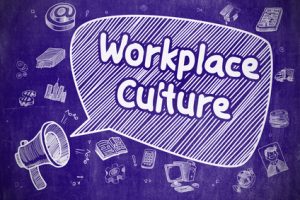 It’s no secret that many of the best performing companies have vibrant and exciting cultures. Disney, Apple, and NIKE, we’re looking at you! On the flipside, a toxic company culture can cause an organization to struggle. Maybe you’re dealing with poor employee morale and high turnover and are wondering if your company’s culture is to blame. What are the warning signs that your company culture may be in trouble? Here are a few signs that it may be time for a cultural assessment:
It’s no secret that many of the best performing companies have vibrant and exciting cultures. Disney, Apple, and NIKE, we’re looking at you! On the flipside, a toxic company culture can cause an organization to struggle. Maybe you’re dealing with poor employee morale and high turnover and are wondering if your company’s culture is to blame. What are the warning signs that your company culture may be in trouble? Here are a few signs that it may be time for a cultural assessment:
- You routinely fall short of meeting goals and “underperformance” is a word tossed around all too often
- Employees aren’t demonstrating a strong commitment to the company and energy is can only be described as “low”
- Workers complain about a lack of positive feedback (or feedback at all)
- There’s a level of mistrust among employees and leaders
- Employees feel there is a lack of opportunity within the organization
- The level of job burnout is high and work/life balance seems to be nonexistent
Don’t wait until issues blow up into big problems. A cultural assessment is a vital step towards assessing the current culture of your organization and taking clear steps towards making purposeful and meaningful change. Outside perspective is invaluable in healing a poor company culture and the damage it can inflict. To discuss conducting a cultural value assessment for your business, please call Leah M. Joppy and Associates at 301-670-0051 or email us at leah@lmja.com.
The Importance Of A Strong Company Culture
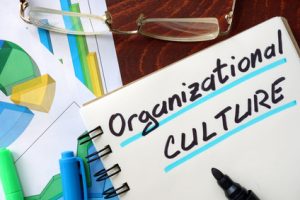 You’ve certainly come across articles with titles like “The 50 Best Places To Work” or “The Best Companies For Work-Life Balance.” And no doubt you’ve questioned, “what makes these work environments so special? You may even wonder how you can create a similar feel-good atmosphere in your workplace. It’s tempting to just add a ping pong table in the break room or offer free donuts on Fridays, but it’s so much more than a few perks here and there. It all comes down to one important component: company culture.
You’ve certainly come across articles with titles like “The 50 Best Places To Work” or “The Best Companies For Work-Life Balance.” And no doubt you’ve questioned, “what makes these work environments so special? You may even wonder how you can create a similar feel-good atmosphere in your workplace. It’s tempting to just add a ping pong table in the break room or offer free donuts on Fridays, but it’s so much more than a few perks here and there. It all comes down to one important component: company culture.
Last month we discussed cultural values as a whole and how they shape the beliefs and behaviors of communities. We spend so much of our time at work that the office becomes one of the most influential communities in our lives. The culture in the office is a huge component of happiness – or discontent. It’s the invisible maker or breaker of an organization. Company culture isn’t something that can be established down the road when you have more time on your hands. It’s something that requires thought, time, and effort – not to mention really listening to your employees.
The culture within an organization becomes its identity. It’s the values, traditions, and customs that an organization believes in and practices – not just to employees, but also to customers. Every business is different and there is no single rubric for the “right” culture. However, you do need a consistent and strong set of values in order to remain competitive. Here are 3 examples of why the culture within an organization is so important:
- It creates a perception of your brand in the marketplace.
- It helps you attract and retain the best talent
- It establishes a set of identity and values for your company
Too many organizations fail to realize that their culture matters and shouldn’t be dismissed as “fluffy stuff.” According to Deloitte research, 95% of workers value company culture more than compensation. How would you describe the culture in your office? Is it something you’ve never thought about and, if you have, is there room for improvement? We are currently conducting cultural value assessments for organizations and we’re ready to help you understand more about this important component to your workplace. Please call Leah M. Joppy and Associates at 301-670-0051 or email us at leah@lmja.com to learn more.
Create A Positive Workplace Culture
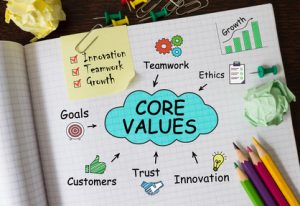 There is nothing better than working for an organization that has a great culture. It makes waking up and going to work each morning so much better! We spend so many of our waking hours at work that it’s no surprise a positive workplace culture is so high on employees’ ‘must-have’ list. While the work may be demanding, your company culture should not add stress to the day-to-day. In fact, it should inspire, motivate, and elevate enthusiasm. It may sound like a lofty goal, but it is attainable. Here are a few ways organizations can create a positive workplace culture:
There is nothing better than working for an organization that has a great culture. It makes waking up and going to work each morning so much better! We spend so many of our waking hours at work that it’s no surprise a positive workplace culture is so high on employees’ ‘must-have’ list. While the work may be demanding, your company culture should not add stress to the day-to-day. In fact, it should inspire, motivate, and elevate enthusiasm. It may sound like a lofty goal, but it is attainable. Here are a few ways organizations can create a positive workplace culture:
- Establish clear organizational core values that are communicated effectively and make employees feel involved
- Foster collaboration and open and honest communication
- Create an inclusive work environment where employees are valued and supported
- Create clear goals and rewards for employees
A positive workplace culture improves teamwork, raises morale, increases productivity and efficiency, and results in employees who want stay with your organization. But it all begins with strong leadership and the desire to look at what’s working and what’s not. A cultural values assessment evaluates where your company culture currently stands, what’s missing, and establishes a plan to make effective change. To discuss conducting a cultural value assessment for your organization, please call Leah M. Joppy and Associates at 301-670-0051 or email us at leah@lmja.com.
What Are Cultural Values?
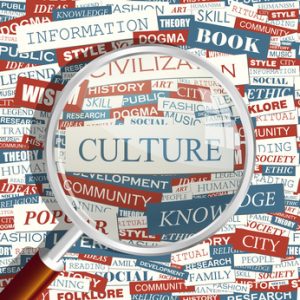 The Business Dictionary defines cultural values as, “The commonly held standards of what is acceptable or unacceptable, important or unimportant, right or wrong, workable or unworkable, etc., in a community or society”. Here’s an example: A Hindu man would rather starve than slaughter and eat a cow, despite the fact that cows roam throughout his village. To the average beef-eating American, this seems strange. If you’re hungry, why not use some of the cows for a food source? After all, they’re just walking around in the street, blocking traffic. What’s stopping the Hindu man from taking advantage of this obvious food source? The answer – cultural values. The Hindus make up over 80% of India’s population and believe that cows are sacred and should not be slaughtered.
The Business Dictionary defines cultural values as, “The commonly held standards of what is acceptable or unacceptable, important or unimportant, right or wrong, workable or unworkable, etc., in a community or society”. Here’s an example: A Hindu man would rather starve than slaughter and eat a cow, despite the fact that cows roam throughout his village. To the average beef-eating American, this seems strange. If you’re hungry, why not use some of the cows for a food source? After all, they’re just walking around in the street, blocking traffic. What’s stopping the Hindu man from taking advantage of this obvious food source? The answer – cultural values. The Hindus make up over 80% of India’s population and believe that cows are sacred and should not be slaughtered.
A group’s cultural values are often difficult for outsiders to understand. But for those inside the group, cultural values are the core principles that dictate the behavior and actions of an entire community. We’re seeing cultural values come into play more and more in today’s workplace. As various cultures are brought together in an office, some will place importance on a particular set of values, while others will have a completely different view. It can be challenging to navigate through it all and meld a diverse pool of employees into a cohesive, productive group.
Each of us is raised in a belief system that influences our individual preferences to a large degree. Often, we can’t even comprehend its influence. We’re just like other members of our culture and we’ve come to share a common idea of what’s appropriate and inappropriate. But understanding cultural values goes beyond the list of “dos and don’ts”. There are so many factors that make up a culture – manners, mind-set, laws, ideas, rituals, and language, just to name a few. Understanding the “why” behind culture is so important, particularly in today’s world. We need to understand how groups have been influenced over time by political, historical, and social issues. This is particularly evident in the workplace, which is becoming more and more diverse.
In order to attract, motivate, and retain the best talent, it’s important to be mindful of employees’ cultural differences, along with who they are as individuals. We are currently conducting cultural value assessments for organizations and we’re ready to help you delve into this important topic. Please call Leah M. Joppy and Associates at 301-670-0051 or email us at leah@lmja.com to learn more.
Examples of American Cultural Values
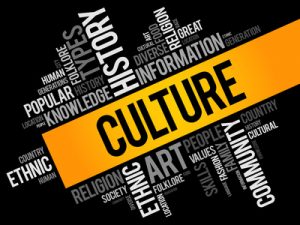 Cultural values are really the collective programming of our minds from birth. These values shape the beliefs, mind-sets, and practices that we often adhere to at work, home, and social settings. We looked at an example of a Hindu cultural value in our previous article and how that value shapes the beliefs, attitudes, and behaviors of that group. But what are some values that are distinctly American and have helped shape the American workplace for generations? The U.S. is a culturally diverse society, but there is a dominant culture that has developed over many years. Here’s a sample of a few American cultural values:
Cultural values are really the collective programming of our minds from birth. These values shape the beliefs, mind-sets, and practices that we often adhere to at work, home, and social settings. We looked at an example of a Hindu cultural value in our previous article and how that value shapes the beliefs, attitudes, and behaviors of that group. But what are some values that are distinctly American and have helped shape the American workplace for generations? The U.S. is a culturally diverse society, but there is a dominant culture that has developed over many years. Here’s a sample of a few American cultural values:
- Personal control over environment and destiny: The future is not left to fate and lies in our hands.
- Equality and egalitarianism: People have equal opportunities and are important as individuals, not based on the family they are from.
- Competition and free enterprise: Competition brings out the best in people and free enterprise leads to progress and success.
- The importance of time: The achievement of goals depends on the productive use of time.
- Change and mobility: Change equals progress, improvement, and growth.
When discussing cultural values, it’s important to remember there are no rights and wrongs. Chances are, each of us has been raised with a different set of values from our colleagues. Education is the key to understanding these differences, particularly when diverse groups of people are working together. To learn more about how cultural values shape your organization and to discuss conducting a cultural value assessment for your business, please call Leah M. Joppy and Associates at 301-670-0051 or email us at leah@lmja.com.
Effective Communication In The Workplace
 Have you ever walked out of a meeting scratching your head and wondering, “What was that all about? What exactly am I supposed to do? What’s the goal of our discussion?” We’ve probably all been there. It comes as no surprise that effective communication is one of the most important issues in the workplace. Strong communication helps everyone feel heard and understood, resulting in a positive, encouraging, and productive environment. On the other hand, ineffective communication causes ideas to fall flat due to lack of follow-through, frustration, and an overall decline in morale.
Have you ever walked out of a meeting scratching your head and wondering, “What was that all about? What exactly am I supposed to do? What’s the goal of our discussion?” We’ve probably all been there. It comes as no surprise that effective communication is one of the most important issues in the workplace. Strong communication helps everyone feel heard and understood, resulting in a positive, encouraging, and productive environment. On the other hand, ineffective communication causes ideas to fall flat due to lack of follow-through, frustration, and an overall decline in morale.
If you feel like your team is stuck in a communication rut or you’re just looking to improve your skills (and we all can!), here are some things to keep in mind and strategies to employ:
Give Undivided Attention: Whether it’s a group meeting or one-on-one, offering full attention to those you’re with goes a long way. How often have you had a conversation with someone who continuously looked down at his or her phone or seemed lost in another world? Lack of focus devalues conversations and causes people to tune out.
Remember to Listen: Listening may not sound like a component of communication, but it is one of the most important ingredients. Being an effective communicator means listening, as well as talking. It sounds easy, but it can take some practice. How often do you find your mind wandering during a meeting or a conversation? It can be helpful to keep a mental checklist of all the main points the other person makes. When the conversation is over, try to recall at least three important things the person said. Get in the habit of doing this until listening is second nature.
Be Mindful of How You’re Communicating: Body language and tone contribute a great deal towards the effectiveness of your message. Maintain a relaxed stance and facial expression, rest your arms by your sides rather than crossing them in front of you, and make eye contact. Remember that words only make up a fraction of your message.
Follow Up in Writing: A lot of information and ideas are thrown around during meetings and it can be challenging for everyone to remember what was shared. Prior to meetings, designate someone to take notes and then assimilate this information into a concise email. Having a follow-up and refresher is an important step to make sure everyone is on the same page.
Effective communicating is more than just talking; it’s about connecting with the people around you. It’s integral to team development, company culture, employee engagement, and innovative thoughts and ideas. If you’d like to improve the communication process in your office or are interested in doing a “wellness check”, we’re armed with lots of strategies and ideas to help. Please call Leah M. Joppy and Associates at 301-670-0051 or email us at leah@lmja.com to learn more.
Effective Communication With Remote Employees
 Remote work is becoming more and more common in the modern workplace and the number of remote workers is increasing every year. Technology has made it easier to embrace remote work, but it has also brought about new challenges when it comes to team communication. Here are some tips to help the wheels of communication keep rolling when you don’t work under the same roof:
Remote work is becoming more and more common in the modern workplace and the number of remote workers is increasing every year. Technology has made it easier to embrace remote work, but it has also brought about new challenges when it comes to team communication. Here are some tips to help the wheels of communication keep rolling when you don’t work under the same roof:
- Establish standards for communication to ensure everyone is on the same page.
- Make sure transparency is a priority. Share all documents, decisions, upcoming deadlines, etc. in one area.
- Find a balance between over-communicating and not communicating enough.
- Make sure new remote team members get to know the rest of the team via video chat.
- Use real-time communication technology.
- Be concise and get to the point at the beginning of messages!
- Always proofread and edit messages to avoid confusion.
- Give space when needed. If remote team members need to take a break from being accessible online to get something done, make sure they know they can do it.
Remote team members add another layer of challenge when it comes to workplace communication. But by using some strategic tactics, it doesn’t have to result in a communication meltdown! For more tips and advice on how to improve communication with remote employees, please call Leah M. Joppy and Associates at 301-670-0051 or email us at leah@lmja.com.
The Impact of Nonverbal Communication In The Workplace
 You’ve probably heard the familiar phrase, “it’s not what you say, but how you say it.” We’ve all been taught that good communication is the foundation of any successful relationship, whether personal or professional. But we may forget that it’s our nonverbal communication – our facial expressions, eye contact, gestures, posture, and tone of voice – that sometimes speaks the loudest.
You’ve probably heard the familiar phrase, “it’s not what you say, but how you say it.” We’ve all been taught that good communication is the foundation of any successful relationship, whether personal or professional. But we may forget that it’s our nonverbal communication – our facial expressions, eye contact, gestures, posture, and tone of voice – that sometimes speaks the loudest.
Consider the following example: As a staff meeting begins, project manager Jack shuffles into the room. He pulls at the sleeves of his rumpled shirt and his shoulders sag. He does not make eye contact with anyone in the room and is absorbed in looking over his notes haphazardly scratched on notebook paper. When he does speak, it’s difficult to hear him. He awkwardly clears his throat as he says, “Good morning, everyone. This will only take about a half an hour, but I’m going to walk you through some of the changes we can expect on our current project and what it means for all of us.”
But it could also go something like this: Project manager Jack walks confidently in the room. He stands tall with his shoulders back. His shirt is wrinkle-free and tucked in and his appearance is neat and professional. He directs his eyes around the room and makes sure that everyone is acknowledged. His notes are neatly on the table, but he doesn’t look at them in favor of his audience. As he begins to speak, his voice is clear, confident, and loud enough for everyone to hear. He smiles as he says, “Good morning, everyone. This will only take about a half an hour, but I’m going to walk you through some of the changes we can expect on our current project and what it means for all of us.”
The same words were used, but a completely different impression was made. It’s not what Jack said, but how he said it that changed. Only his appearance, tone, and manner were different, yet his nonverbal communication had an enormous influence on his team. Which version of Jack would you trust the most? The shuffling, difficult-to-hear person who won’t look you in eye? Or the confident, articulate person who acknowledges everyone in the room? Research suggests that we are more likely to believe a poor argument explained to us in a convincing manner than one based on sound facts and logic, but presented by someone who sounds uninterested and uninformed. That’s the power of non-verbal communication.
Have you thought about the impact of nonverbal communication on your workplace? We can show you how to improve the way you and your team use nonverbal communication through a variety of fun team activities and exercises. Please call Leah M. Joppy and Associates at 301-670-0051 or email us at leah@lmja.com to learn more.
Types of Nonverbal Communication
 When we interact with others, we continuously give and receive wordless signals. All of these nonverbal behaviors – the way you listen, look, move, and react- send strong messages, some positive and others negative. In many instances, what you say and what you communicate through your body language may be two totally different things. When confronted with these mixed signals, your audience has to choose whether to believe your verbal or nonverbal message. Often, nonverbal communication is the winner because it’s a natural, unconscious language that conveys your true feelings and intentions.
When we interact with others, we continuously give and receive wordless signals. All of these nonverbal behaviors – the way you listen, look, move, and react- send strong messages, some positive and others negative. In many instances, what you say and what you communicate through your body language may be two totally different things. When confronted with these mixed signals, your audience has to choose whether to believe your verbal or nonverbal message. Often, nonverbal communication is the winner because it’s a natural, unconscious language that conveys your true feelings and intentions.
If you want to become a better communicator, it’s important to become more sensitive to your own body language and nonverbal cues, in addition to those of others. And there are so many types of nonverbal communication! Here are a few examples:
Facial expressions: the look on our face can express countless emotions without saying a word.
Body movement and posture: perceptions of people are often affected by the way they sit, walk, stand, or hold their head.
Gestures: waving, pointing, and using our hands when we’re arguing or speaking animatedly can be easily misconstrued.
Eye contact: looking someone in the eye can communicate many things, including interest or even hostility.
Space: we all have a need for physical space, but the need differs based on the situation, the closeness of the relationship, and culture.
Voice tone and inflection: as mentioned in the last article, it’s not just what you say, it’s how you say it!
Nonverbal communication plays such an important role in the workplace. It tells people whether or not you care, if you’re being truthful, and how well you’re listening. For more information about the role nonverbal communication can play in your office, please call Leah M. Joppy and Associates at 301-670-0051 or email us at leah@lmja.com and let’s discuss some team activities!